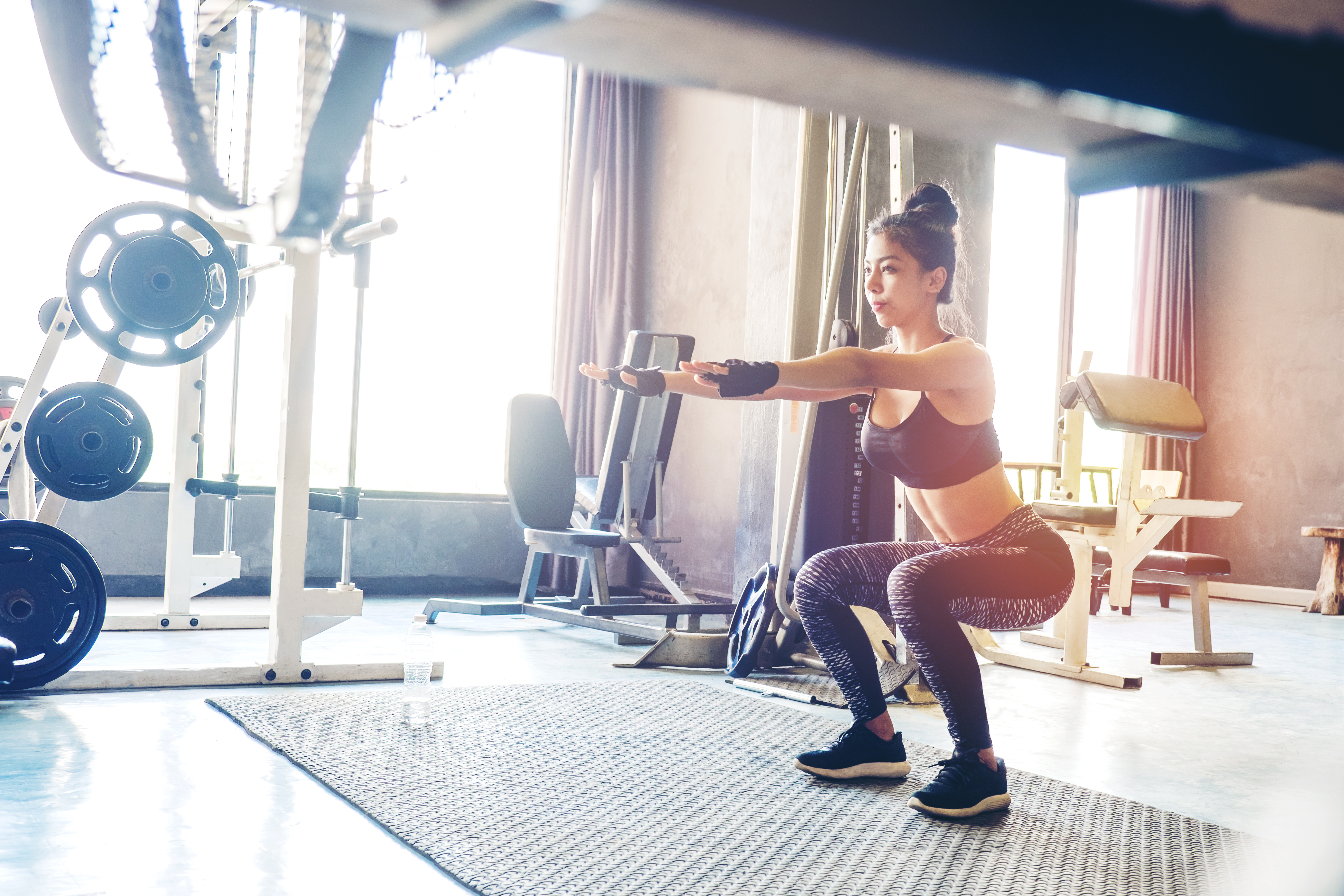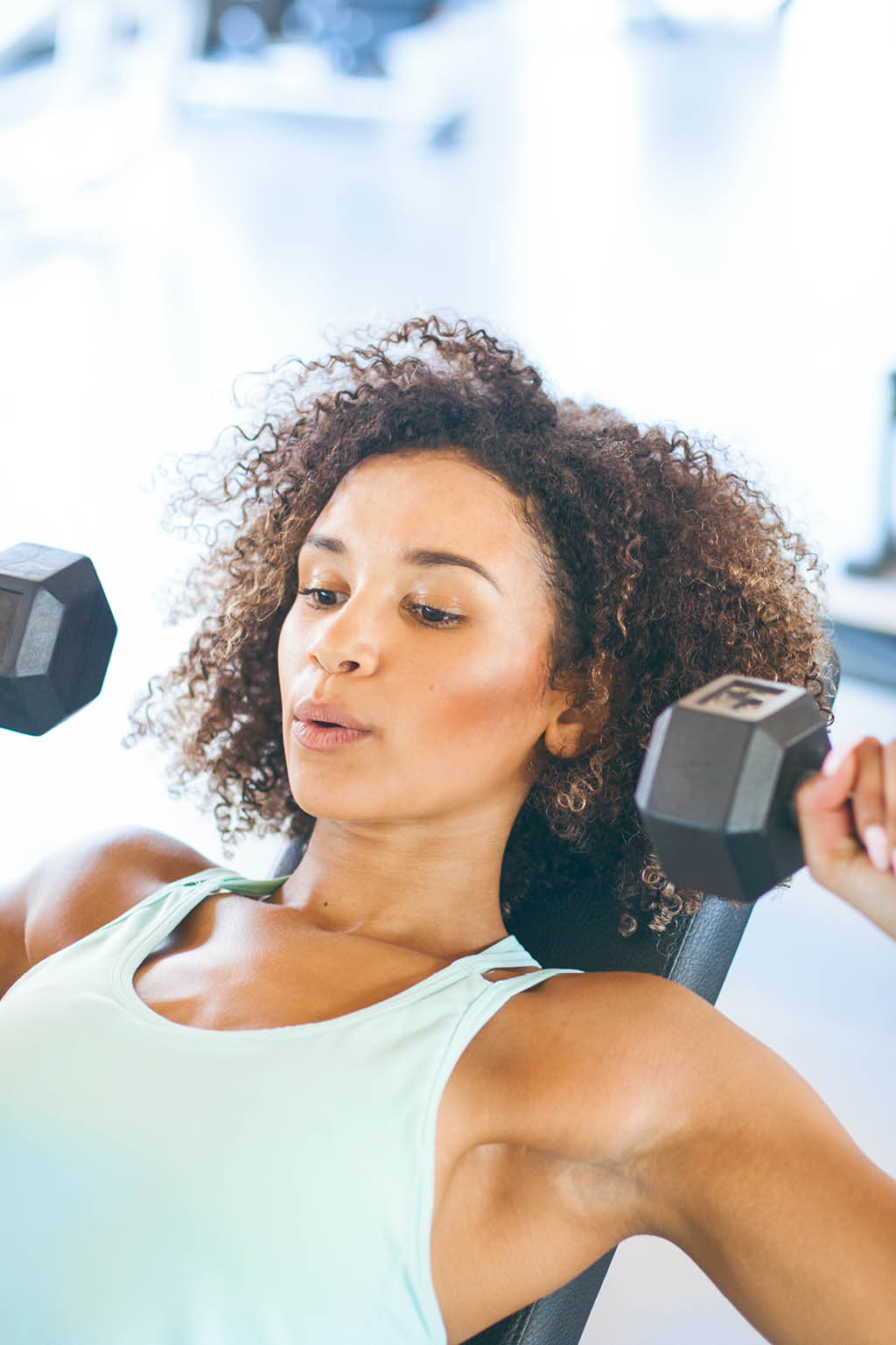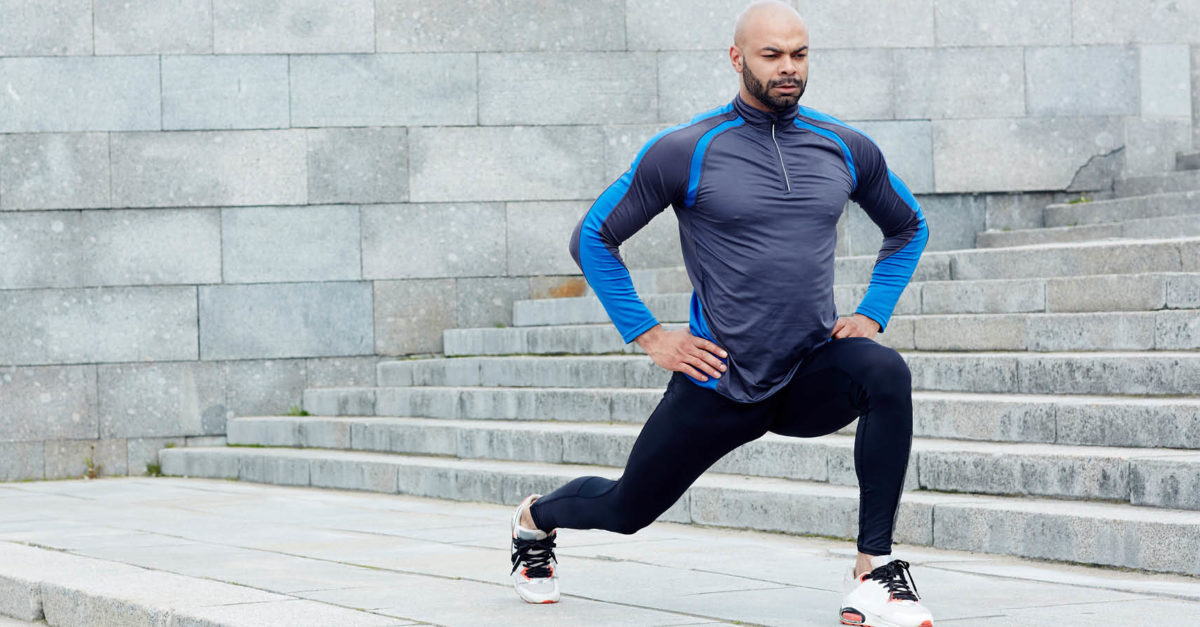Strong Body, Strong Self
When starting a new exercise program, many people like to play it safe. Cardiovascular-based workouts are often the go-to, as they leave you feeling like you worked up a good sweat. They typically don’t involve weights, and you don’t necessarily even need to hit the gym to knock one out.
While cardio is an essential part of a well-balanced fitness regimen, it’s not the be-all and end-all of workouts. In fact, there are other ways to achieve the same heart-healthy benefits through very different types of exercise—without the treadmill.
What kind of exercises are we talking about? Strength training and weight training. If you’re thinking, “There’s no way I’ll ever be comfortable at the weight rack,” we understand—lifting can be intimidating. It’s foreign territory for a lot of people, and, more important, can pose the threat of serious injury if done improperly. That’s why we’re giving you the ultimate strength-training tips to help ease you into lifting. Just remember: if you’re starting any new exercise program, it’s important to consult with your doctor first.
Form First
Whether you’re already working with a basic level of fitness or are starting from scratch, the best thing to do is start simple when it comes to lifting. Focus on form first, and be sure to perfect new moves using only your body weight before picking up a barbell or free weight.
Jesse Dietrick, a certified strength and conditioning specialist and director of trainer development with one of America’s top gyms—Fitness Quest 10—also recommends figuring out what exercises are OK to perform safely for your particular body type and capabilities. A personal trainer can help you determine the best course of action, but if you want to go it alone, keep an eye on what feels particularly straining during an exercise, and avoid it. Listen to what your body is telling you.

The Five Basic Joint Movements
Because the movement of your joints is directly related to muscle isolation, it’s important to understand the basics of how to perform movements strategically and optimally. “If you want to target specific muscle groups, make sure that you are only moving that joint,” says Dietrick. “For example, if you are doing bicep curls, your hips should stay in place, you should not extend through your lower back, and your shoulders should not look like they are attached to your ears. Focus on the joint that is working, and the rest of the body should stay still.”
Squats
• Work out the entire body, with a focus on the glutes and leg muscles.
• Can be performed with or without weights.
Stand with your feet shoulder-width apart, facing forward, with your abdominals tight. Keeping your back straight and your weight on your heels, bend at the knees until you’re squatting as low as possible without your knees going over your heels. Slowly straighten your legs to a standing position, keeping your glute muscles tight as you rise. Be sure to keep your gaze forward to avoid straining your neck.
Lunges
• Predominately work the muscles in the front and back of the legs, like the hamstrings and calf muscles.
• Can help improve balance and prepare leg muscles for external weight exercises.
Standing with your feet hip-width apart, looking forward, and your back straight, move one of your legs behind you and bend at the knee—keeping your knee and your ankle aligned. Your knee should be bent as close to the floor as possible. Repeat with the other leg for one rep. You can keep your arms at your sides, on your hips, or clasped together at chest level during this exercise.
Hip-Hinges
• Work the joint where your leg meets your hip.
• Can involve thrusting movements or movements that put more focus on leg muscles.
Lying on a mat or soft surface on your back, with your shoulders blades flat to the mat, lift your hips to put your body in a bridge position (your legs should form an approximate right angle) while squeezing your glutes. Your legs should be hip-width apart. Keeping your abdomen flat in a plank position, slowly lower your hips toward the mat.
Push-Ups
• Involve upper-body muscles in the biceps, triceps, and chest.
• Can be performed through basic movements or more complex exercises.
With your arms just underneath your shoulder blades and legs slightly apart, bend at your elbows to push your weight down toward the floor. Try to keep your torso and legs straight like a plank when moving your arms up and down. For another push-up variation, you can perform a push-up with your calves flat on the mat and your ankles crossed.
Pulls
• Can work muscles in the arms and also across the back.
• Efficient for working harder-to-reach muscles, like the trapezius (upper back).
Straddle a bench or chair (with one knee resting on the surface of the bench/chair and the other leg slightly bent on the other side). Bend your back into a slight incline position. Keep one arm resting on the bench or chair, and, with the other arm, gently pull a weight toward your body.
Once you’ve mastered these joint movements, you can slowly incorporate outside weight into these or similar exercises. What’s most important is focusing on the basics to target the specific muscle groups you’re looking to grow.
Increasing in Increments
Once you have basic form down, you’ll want to start increasing weight in small increments in order to build strength and see results. When you’re ready to perform an exercise, develop a plan for how many repetitions and sets you will perform of it. Repetitions (reps) are the number of times you perform an exercise in a row, while sets are groupings of the same exercise. The Mayo Clinic recommends starting out with a weight that you can comfortably lift 12–15 times, which you can increase in weight or reps over time.
Upper Body
In general, people who are just starting a weight-lifting routine will need to start at a lower weight for upper-body exercises.
• Start at the weight most comfortable for you to complete 12–15 reps.
• After three weeks, try increasing the weight by 2.5–5 pounds.
• After a month, try increasing the weight again.
Lower Body
Though you should never jump straight into using heavy weights, the lower body is generally more capable of withstanding it better than the upper body.
• Like the upper body, start at the weight most comfortable for you to complete 12–15 reps.
• After three weeks, try increasing the weight by 5–10 pounds.
• After a month, try increasing the weight again.
Perhaps more important than weight and reps, though, is the mind-muscle connection, which requires you to focus on working a specific muscle as you’re moving it. It might sound obvious, but research has shown that focusing hard on a particular exercise as you’re completing it can help the muscle grow even stronger.
Get Down to Business
Of course, these are not the only exercises that should be in your strength-training routine, but they are a good place to start. If you’re still apprehensive about how to get going, consider working with a certified trainer, who can help develop a program that’s just right for you.
For more safety information and tips for weight training, visit bodybuilding.com.









